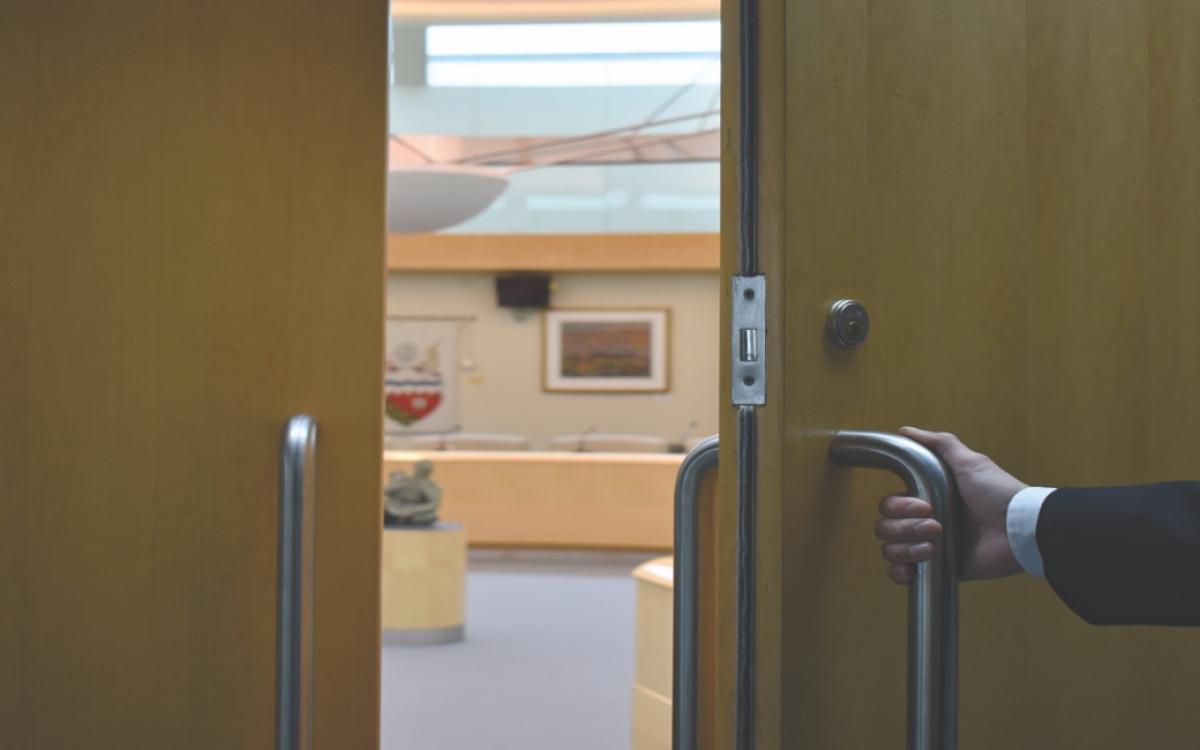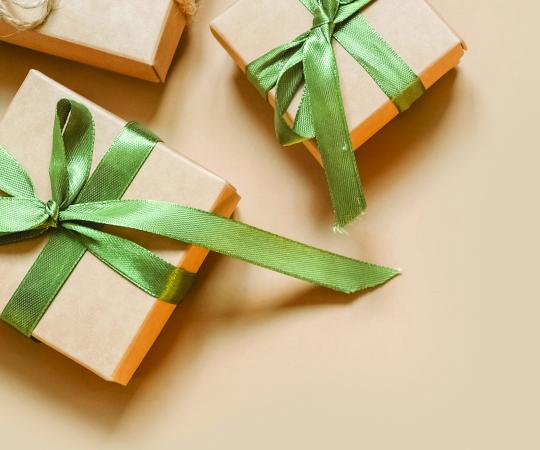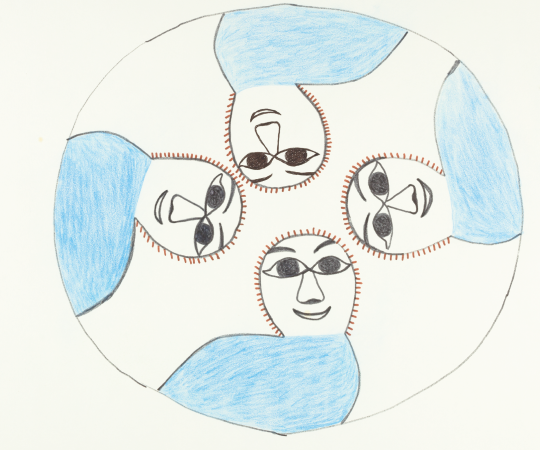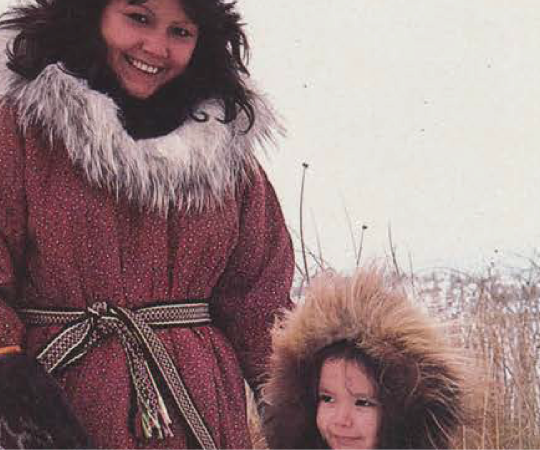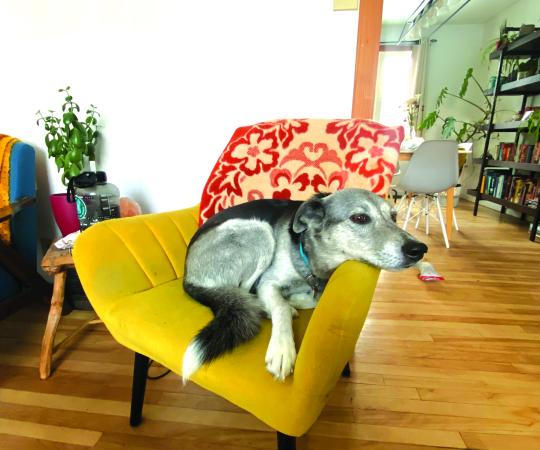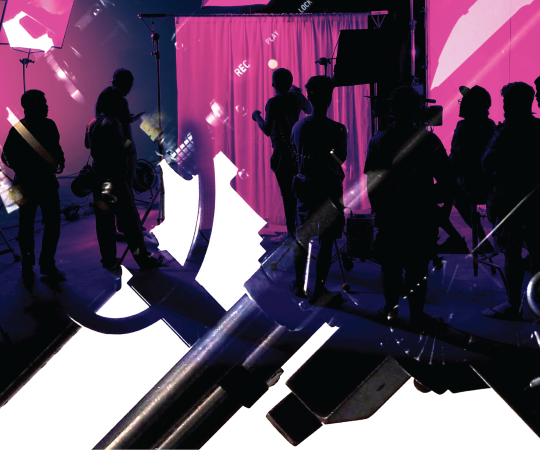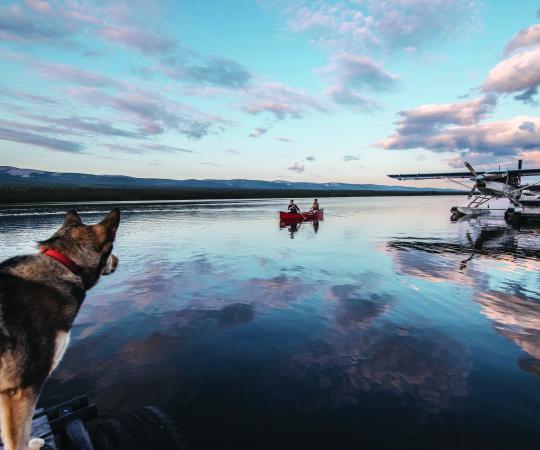It’s been over two years since Terry Pamplin undertook the unsuccessful rescue mission to track down a long-lost mural, and the mystery still haunts him to this day.
The mural in question was the work of well-known Northwest Territories painters Jen Walden and Sandy Craig, who had been commissioned by the territorial government for $5,000 to create a piece celebrating the reconstruction of Highway 3 in 2006. It depicted a rather northern scene of bison peacefully crossing a highway dotted with fireweed and was presented at a celebration held at the Folk on the Rocks site in Yellowknife.
That was the last time anyone saw it. No one, including the artists themselves, seems to know where it is to this day. Walden was told it ended up in a garage owned by the territorial department of public works, and that it exists out there, somewhere.
Walden points out that she’s not too hung up on the mural. It was a long time ago, she says, and she’s a different artist now. But Pamplin, himself a well-known painter in the city and good friend of Walden, couldn’t let it go. It was an artwork that had been created with public funds to be viewed by the public. So, in a bid to satisfy his own curiosity, Pamplin set out to find the elusive bison mural, two years ago. He asked around, attempting to see if he could suss out exactly where the piece was hiding. It had to be somewhere, right?
Unfortunately, Pamplin’s hunt for the mural came up short. After investigating on and off over the course of a year—making calls, asking around, and scratching his head—he was none the closer to unearthing its definitive location.
It was an incredibly frustrating experience. What does it say when a piece of art, having been dreamt up within an artistic eye and given form for the masses, goes missing?
“It's not just a couple of thousand bucks for an artist and keep them happy or give them something to do, but the actual object itself is worthwhile,” Pamplin asserts.
“But then it gets into a building that’s, like, housed with a bunch of graders and heavy equipment and maybe a pile of gravel, and people lose track with whatever respect they had for it. It just becomes, ‘Oh, what’s that shit in the corner?’”
The bison mural is just one of several lost pieces scattered somewhere around the territory. For example, a 12-metre-long and six-metre-high mural, painted by Chipewyan Dene artist John Rombough for the 2008 Arctic Winter Games in Yellowknife, has also been squirrelled away in some unknown location ever since the games ended.
Some of the best pieces of northern art in the NWT decorate private rooms and cluttered warehouses, on display for an elite few or forgotten about in a dusty corner. The art collection of the NWT might be owned by the public, but that doesn't mean they get to view it.
Those in the territory’s art realm suspect there are a number of reasons why this might happen. Maybe it’s because officials don’t fully understand what public art is, and therefore don’t give it top billing on the list of priorities to display. Perhaps it has to do with tight budgets and a lack of political will. Or, it could be that no one—municipally, territorially, or otherwise—is willing to take responsibility for it.
Ruth McCullough, the former territorial curator for the Yukon, thinks the fact that the NWT doesn’t have someone specifically dedicated to taking care of its public art collection is outrageous. It could also explain the plethora of tales around works being commissioned and lost or hidden away.
“They don't have anybody who cares,” she says. “And in order to have the artwork looked after, [you need] somebody who cares. Bottom line.”
Though she’s been retired for over 10 years now, McCullough was the original territorial curator for the Yukon for nearly three decades. In this role, she cared for the territory’s permanent public art collection at the Whitehorse Public Library and curated monthly exhibits, alongside working with artists across the territory to acquire new pieces and showcase works in remote communities.
Nothing went missing or stayed tucked away for long on her watch, McCullough insists. She developed a biannual rotation system that would allow her to keep the artworks safe while ensuring they were regularly on display in different public spaces. It’s straightforward, she insists: the artists who have agreed to produce or sell art to governments (or anyone looking to make a public display) expect to have those pieces displayed. Anything less is absolutely unacceptable.
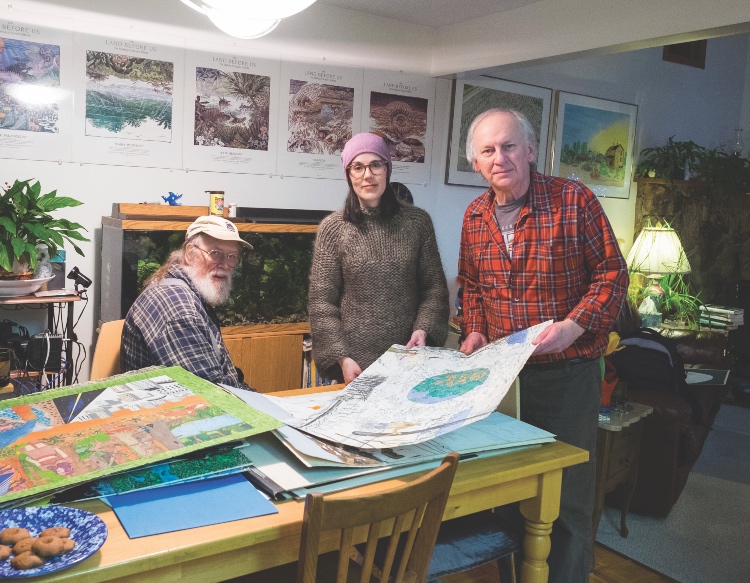
That’s also why McCullough would refuse any government employee who requested a piece be put in their office. She was so militantly steadfast in her position on this, in fact, that her co-workers eventually knew not to bother asking.
“I was not in the position of decorating offices,” she says, matter-of-factly. “That's not what the permanent collection is for. It's for being on display to the public, so the artists and the public can benefit.”
Public art is for the people, McCullough says. Plain and simple.
Erin Corbett, the current acting territorial curator in the Yukon, echoes McCullough’s cut and dried philosophy.
“It's taxpayer dollars,” she says. “It shouldn't be locked up in someone's office… [It’s] about enriching lives and supporting the arts community.”
According to Corbett, the curation team has more or less kept the rotation methods and measures in place that McCullough implemented all those years ago, with just a few small changes to process. The collection has since grown to 475 spaces in 30 different locations throughout the territory, with an open call for Yukon artists to submit work for consideration every year.
In Nunavut, art holds a similar position on the territorial priority list, driven by the fact that one-third of Inuit in the territory are artists, with many making their living from creative pursuits.
Their artistic projects are not just to beautify communities and add colour to streets (though it continues to serve that valuable function), says Anne Cécile-Grunenwald, the territory’s acting manager of cultural industries. It’s a way to provide for one’s family, to put food on the table, to sustain life. It becomes economically imperative for the territory to support, appreciate and, yes, show off its art.
So much so, in fact, that bolstering locally created art has become part of the territory’s response to the COVID-19 pandemic. The Nunavut Public Art Initiative was launched earlier this year specifically to create funding for public pieces, allowing artists to propose projects and apply for up to $50,000 worth of funding. Regional arts advisors work with community economic development officers to support people through the application process, as well as ensure the pieces have proper permits for display.
This program, says Cécile-Grunenwald, will provide much-needed reinvestment—financially and culturally—in the communities.
In the NWT, it would seem to be a different story. Publicly owned art is not always readily available for acquisition, nor is it always available to the public eye.
For instance, nine oil paintings from A.Y. Jackson, a member of the Group of Seven and one of Canada’s most famous artists, line the walls of the Legislative Assembly’s caucus room.
Jackson painted the pieces, which feature scenes of the Great Bear and Great Slave Lakes, in the 1940s and ’50s after touring the territory. The signature Group of Seven aesthetics are accounted for—soft, yet rugged landscapes, with delicate brushstrokes offering colour and life. Given the painter’s prestige in the canon of Canada's artists, the paintings are likely of great value; three of Jackson’s pieces sold for a total of $672,625 from the Art Gallery of Ontario in Toronto last year.
And yet, while they may be admired by the politicians and government staff that frequent the room, they’ve been hung in a place rarely visited by the broader public for over a decade.
Pamplin himself has seen these paintings only once. In this location, he says, it can hardly be classified as “public art,” despite being in the territory’s possession. This work shouldn’t be hanging in the Legislative Assembly, he says. It should be in a publicly accessible space. Like, say, a free, publicly owned gallery space.
“The biggest thing is the fact that there's no gallery designation or no political will to create that,” he says. There’s no desire to stand up and say, “This is our public art collection, and it's valuable, and it's huge.”
A permanent art collection, all by northern artists, resides in the Prince of Wales Heritage Centre in Yellowknife (the territorially run museum). It includes 75,000 objects from around the NWT, but as Sarah Carr-Locke, director of culture and heritage for the Department of Education, Culture and Employment, points out that number isn’t limited to artwork. It includes geological and archeological items as well.
Fine art only makes up about two per cent of the entire collection, not including pieces accounted for in the archeology section. Individual pieces are not given formal appraisals in terms of monetary value; however, the centre’s art collection is insured for $1 million. According to the GNWT, the true value is likely higher.
Given the vast array of items in the facility’s care, Carr-Locke estimates that only about five per cent of the Prince of Wales’ total collection is out on display at any given time. Exhibits come from careful deliberation and sometimes don’t even draw from the existing collection.
An exhibit of Yellowknife paintings by heavy-hitter Walt Humphries, for example, relied on the kindness of Humphries’ patrons to donate pieces they personally owned for the duration of the exhibition.
The rest of the time, items remain in climate-controlled storage rooms that make up about a quarter of the museum facility. Pieces such as moccasins and moose hides fill the space, as well as prints, paintings, and photographs. At one point, the museum held within its archive soapstone and prints from the Kenojuak Cultural Centre and other Inuit art, but most of these items were repatriated to Nunavut when the territory split from the NWT. (Many are now on loan to the Winnipeg Art Gallery's new Inuit Art Centre.) Other paintings and pieces of art have been sitting in storage vaults, inaccessible to the public, for nearly 30 years.
It isn’t ideal, Carr-Locke admits, but rotating the collection in this way is necessary to allow museum visitors the opportunity to check out something new from time to time.
“If you don’t change the exhibits, you're not going to see other parts of the collection,” she says. “[We can’t] put one artwork up, and then we're so attached to that…we don’t ever see anything new.”
Too much to hang on the walls, and not enough space, in other words. This is precisely why the territory would benefit from a distinct public gallery space, Pamplin says. It would not only increase the sheer number of works able to be displayed, but it would allow for accountability. Collections such as the A.Y. Jacksons in the Legislative Assembly—paintings that are publicly-owned—would have a dedicated place for the public to view them.
“It might take 10 years to view the holdings of the Northwest Territories, and the Prince of Wales museum collection, on a rotating schedule,” says Pamplin. “But at least if they had the facility, and then the strategy and the curation to organize the various displays or exhibits, then that would justify the expenditure of those public funds.”
Despite not necessarily being phased by her own piece being missing, Jen Walden, one of the painters behind the infamous bison mural, echoes Pamplin’s idea.
“Part of me just feels like it was probably poor planning from the beginning,” she says of her experience. “You need to be able to pay your artists fairly, you need to be able to maintain the work, you need to be able to mount the work. I bet you none of that was really well planned, either, because they wouldn't be commissioning something of that size for such little money.”
This is most likely what leads pieces like her mural to be stashed away, she says. And the hill that people die on shouldn’t necessarily be making sure one individual piece gets up, but making sure there are proper protocols in place in the future to ensure that pieces are looked after. Public art should be commissioned and acquired with intention and meaning.
For his part, Pamplin has made it his life’s mission to change territorial attitudes surrounding public art so that no more pieces go missing or uncared for. He constantly lobbies the Yellowknife City Council for funds to touch-up and repair work around the city. He and fellow artists have held exhibitions, workshops, and other events to educate the wider community on the importance of art.
Public art is more than just a picture on a wall or a painting across a building, he explains. It is key to creating a community’s sense of self, and hints at collective values surrounding the arts as a whole. It allows glimpses into what precisely moves, shapes, and creates space and place within the North.
“[Public art] shows everybody who we are,” Pamplin says.
And that alone, he adds, is invaluable.

